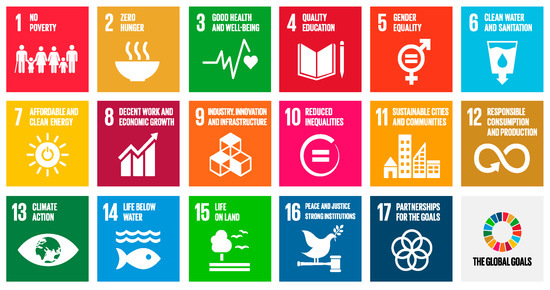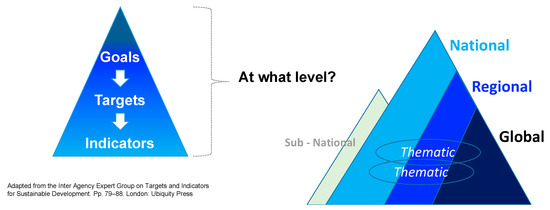This papentryr responds to the United Nations’ 2030 Sustainable Development Goals (SDG). In 2015, the international community responded to the sustainable development challenge with their report Transforming Our World: The 2030 agenda for sustainable development . The SDGs a The paper suggests this is of paramount importance for both business and society. Across the construction sector, despite evidence that suggests 88% of those surveyed want to measure the United Nations’ blueprint, with 193 nations signatories, to address the globalSDG impact at both the business and project levels, there continues to be major challenges, such as poverty, inequality, climate change, environmental degradation, prosperity, peace and justice. The concept of sustainable development acquired its most cohesive definition i in achieving this objective. This paper uses empirical evidence from the results of a qualitative research study of 40 interviews with executives from the United Kingdom (UK) construction industry. It was supported by a text-based content analysis to strengthen the United Nations’ 1987 Brundtland Commission report, which described it as “developmentfindings. The results indicate that SDG measurement practices are embraced in principle but are problematic in practice and that meets the needs of the present without compromising the ararely does action match rhetoric. While the research was completed in the UK, the findings have broader applicability of future generations to meet their own needs” . Using the “triple bottom line” , Ochieng, Price and Moore took the definition further by placing it into other countries since most construction firms have extensive global business footprints. Researchers can use the findings to extend the current understanding of measuring outcomes and impact at project level, and, for practitioners, the study provides insights into the context of global construction projects and describing it as the balance of economic, social and environmental aspects. In their book, they identify a number of systemic issues, “hard and soft” inual preconditions necessary to achieve the intended outcomes of adopting a mechanism for the measurement of SDGs. The international relevance of this research is inherently linked to the global nature, that provide new challenges for global construction projects in relation to sustainable development of the SDGs and therefore the results could be used outside of UK.
- sustainability
- project success
- business–society
- business models
- Sustainable Development Goals (SDGs)
- sustainable development
- infrastructure project
1. Sustainable Development Goals
Dear author, the following contents are excerpts from your papers. They are editable.
The most significant global response to the planetary boundary challenge was in 2015, when all governments ratified the UN’s 17 Sustainable Development Goals [1] (as shown in Figure 1), to be achieved by 2030 (with 169 targets and 244 indicators also agreed in 2017). This represented a major step change in the implementation of the sustainability agenda and effective responses to the planetary boundary challenge. Although the SDGs build on the earlier Millennium Development Goals (MDGs) [
4] by focusing on similar issues, the SDGs differ from the MDGs because they are for all countries in the world to implement, developed and developing alike [2]. Also, unlike the MDGs, the SDGs are focused on monitoring, evaluation and accountability across society, not just at national level, which is why it is critical that the link is made from the “bottom to top”, meaning from the delivery of project-level impacts that can be assessed against the national and global targets and indicators. The research presented later shows this cannot currently be achieved, and the evidence [3][4] illustrates that the golden thread from project measurement to national/global level is missing. There is a gap between theory and practice [5][6].

In order to understand why there is a perceived gap, it is helpful to analyse the structural build of the SDG performance framework. In this regard, the SDG delivery targets are understandably ambitious and needed a reporting framework that would drive meaningful and verifiable progress towards the 2030 targets. In 2017, the UN’s Inter-agency Expert Group on Targets and Indicators for Sustainable Development designed a mechanism that linked goals, targets and indicators across the geographic and governance boundaries at national, regional and global levels [7]. Within this framework, shown in Figure 2, the Expert Group designed thematic areas that could also be used at the subnational level, but, because the targets and indicators were originally designed to be used at the global, regional and national levels, they had reduced applicability at organisational or project levels. Considering the aforementioned literature, it is possible to synthesise the first proposition related to the Sustainable Development Goals as follows. Based on this discussion, the first proposition was developed, shown below.

Figure 2. The Sustainable Development Goal (SDG) target and indicator framework developed by the UN subcommittee [7].
2. SDGs in the Context of Infrastructure Projects in the Construction Sector
Most of society’s developments in recent times can be connected to infrastructure projects [8][9] and the UN recognise that the development of infrastructure represents a massive opportunity to stimulate economic prosperity, reduce poverty and raise standards in health, education and gender equality [10]. It is apparent that ameliorating many of the risks associated with grand challenges, such as climate change, can only be achieved through investment in appropriate and resilient infrastructure and engineering [11].
A growing area of research has been in the comparison of construction projects’ impacts on sustainable development from different angles. For example, Shen et al. [12] highlighted the role of projects to impact across the triple bottom line of people, profit and planet [13][14][15]. In this regard, construction projects are acknowledged as making an impact on the economic and social development of nations. Increasingly, recognition is given that these dual aims of economic development and social development can be achieved in harmony and, indeed, provide competitive advantage for firms [16][17]. Other studies have delved deeper into the changing nature of how project sustainability has changed within the construction industry. For example, Edum-Fotwe and Price [18] highlighted the issues that affect the assessment of social factors of construction projects, which this article suggests can be combined with the environmental and economic requirements of projects.
Defining infrastructure project success is central to understanding how to link global-national level SDGs with local infrastructure projects because it allows stakeholders to align their expectations against shorter-term outputs as well as the longer-term outcomes and SDG impacts. More recent research into project success definition [19] has consistently identified benefits and outcomes as being a critical determinant for the assessment of project success. Considering the aforementioned literature, it is possible to synthesise the second proposition related to SDGs in the context of infrastructure projects in the construction sector as follows.
3. Challenges and Opportunities for Measuring SDGs in the Construction Industry
As discussed above, there is evidence of an increasing interest, and in some cases demand, for promoting SDG measurement in the construction industry [8][9], with one report [20] that surveyed 325 engineers having a 95% demand from practitioners, who said that this was “very important” to them, with only 30% stating that they had adequate tools, processes and systems to measure them at project level. The survey [20] indicated four primary shortfalls for measuring SDGs on infrastructure projects, namely, leadership (1), tools and methods (2), engineers’ business skills in measuring SDG impact (3) and how project success is too narrowly defined as outputs (such as time, cost and scope) and not outcomes (longer-term local impacts and stakeholder value) (4). This highlights that there are several challenges that impede the practical measurement of SDGs on projects, which need to be fully acknowledged.
Whilst there is still a limited body of research on the limitations of SDG measurement, there is much that can be learned from the measurement of sustainability on projects, and this is transferable to the SDG research. For example, Arif et al. [21] identified that there is often limited sustainability knowledge, especially amongst senior leaders, and this results in weaker understanding and impact assessments of related themes, such as poverty, environmental issues, supply chain adherence to sustainability best practice, cultural evaluation, technological deficiencies and limitations of research in depth and breadth, all of which have a negative influence on the valuation of sustainability, both as an investment lens and a delivery approach. A further barrier to the use of SDGs, which potentially mirrors sustainable construction, is what some authors have suggested is a lack of capacity and capability to implement effective and efficient sustainability [22]. Considering the aforementioned literature, it is possible to synthesise the third proposition related to SDGs in the context of the challenges and opportunities for measuring SDGs in the construction industry as follows.
4. The Concept of the Triple Bottom Line in Relation to SDGs
A contribution to the growing literature on the measurement of infrastructure projects on sustainability is provided by Ding and Shen [23], who focus on the balance needed between benefits to society whilst protecting the environment and still achieving the economic benefits envisaged in the project business case. The linkage across the three areas in the construction industry is further defined by Kibert [17], who suggests that the interrelationship between a project’s outputs and the society that is impacted is a central component of defining the sustainability success of an infrastructure project. This introduces the concept that project success definition needs to consider success against the triple bottom line (TBL) [13][14][15] of social, environmental (or ecological) and economic (or financial) effects, otherwise noted as the “three pillars” concept of “people, profit and the planet” [13][14][15]. However, the overemphasis on the last of the TBL criteria, namely finance, brings us to the root of the problem of measuring projects’ SDG impact [3][4].
This is because the crux of the project reporting problem lies with the dominance of accounting tools, which have been the preeminent business method of reporting business success for over 500 years since Luca Paccioli first published his papers on double entry bookkeeping [24]. It has largely remained unchanged until the past 10 years. As evidence of this widening to cover the three pillars of TBL, there has been a proliferation of mechanisms and economic models to track different elements of TBL, for example, environmental, social and governance (ESG) [13], which introduces these three core areas into the business investments decisions that measure the ethical and sustainability impacts of a company. The contention of this current research study is that the proliferation of project success measurement theories, tools and concepts, which are mostly finance-driven, causes confusion and often leads to suboptimal action [25] and that a TBL perspective needs to be integrated from the start of any business case development (see later section on business cases). Considering the aforementioned literature, it is possible to synthesise the fourth proposition related to SDGs in the context of the concept of the triple bottom line in relation to SDGs as follows.
